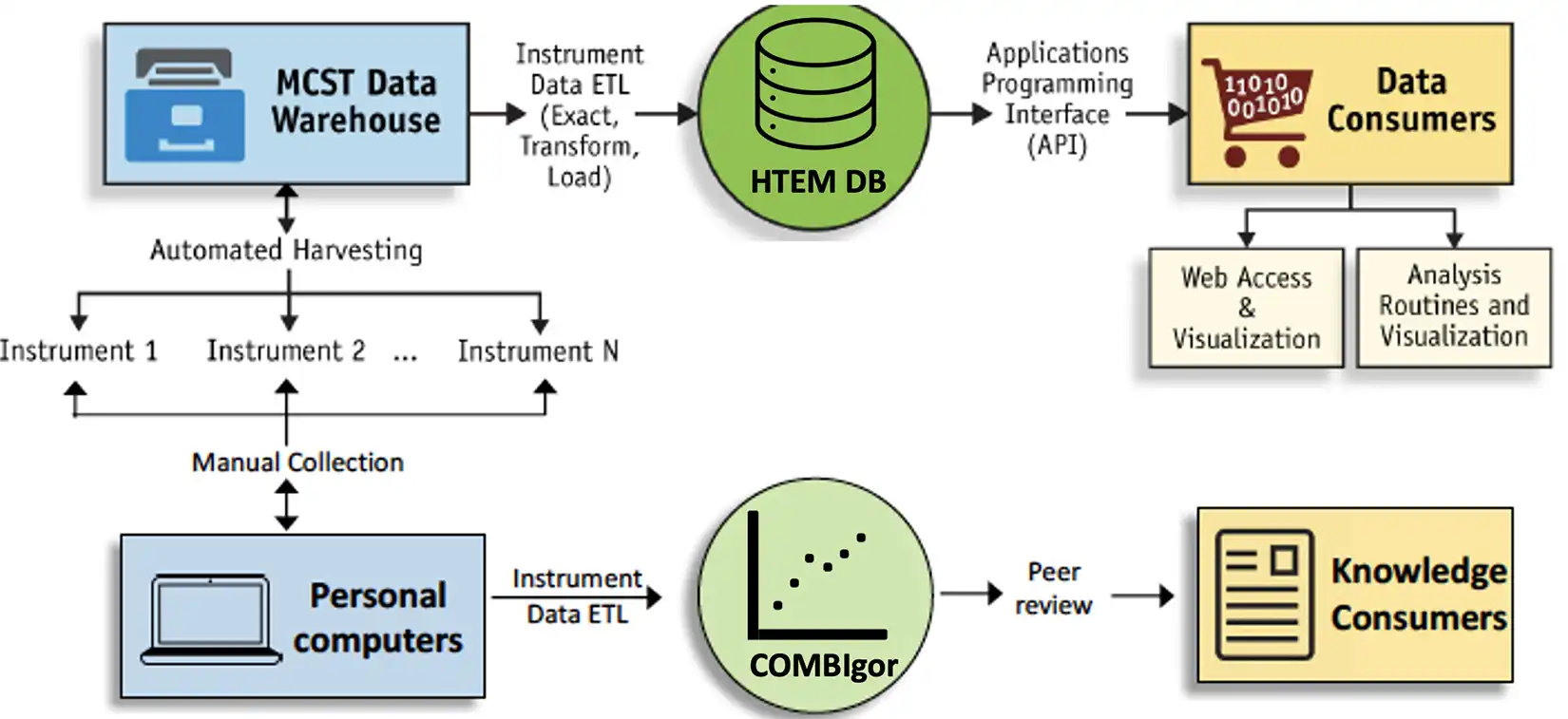Automated Data Analysis
NLR's materials discovery and design researchers have developed both local and network-based analysis capabilities and databases to more efficiently turn data from high-throughput experiments into useful materials knowledge.
Data generated during combinatorial depositions and subsequent spatially resolved characterization of combinatorial libraries is of tremendous value for machine learning to both understand data and collect information for longer-term analysis.

Significant investments have been made to support the navigation of this data stream by researchers, including:
- Research data infrastructure
Automated data harvesting, processing and alignment of deposition and characterization data from combinatorial experiments. - Local computer analysis
Our custom software package COMBIgor (implemented in Igor Pro) can be installed on user computers, offering project level management and analysis of data from combinatorial experiments. - Network accessible database
Interactive visualization of deposition and characterization data from combinatorial experiments in the High-Throughput Experimental Materials Database (HTEM-DB).
Research Data Infrastructure
NLR hosts an extensive research data infrastructure for high-throughput experimental materials science. It includes a data warehouse, which is a raw file repository automatically harvested from laboratory computers and stored in a central location. It also features the Laboratory Metadata Collector, a custom web form-based application for capturing synthesis conditions associated with the characterized sample libraries. Other features of the research data infrastructure include:
- Data extraction, transformation, and loading (ETL) code base
- Direct links from the research data infrastructure to HTEM-DB and COMBIgor.
For more information, read Research Data Infrastructure for High-Throughput Experimental Materials Science, Patterns (2021).

COMBIgor
COMBIgor is an open-source software package written in the Igor Pro environment and designed to offer a systematic approach to loading, storing, processing, and visualizing combinatorial data. Some features include:
- Methods for loading and storing data sets from combinatorial libraries
- Data-analysis routines for simplified processing across libraries of data
- Advanced visualization routines to construct informative figures
- Extensive documentation and example code for easy user customization.
COMBIgor is designed to be easily customized for integration with additional instruments and data processing algorithms.
For more information, read COMBIgor: Data Analysis Package for Combinatorial Materials Science, ACS Comb. Sci. (2019).
High-Throughput Experimental Materials Database
The HTEM-DB contains the materials data obtained from high-throughput experiments performed at NLR.
The HTEM-DB was designed with the purpose of releasing large amounts of high-quality experimental data to the public through an interactively searchable and programmatically accessible long-term repository. Some features include:
- Web-based interactive search and filter tools for finding entries of interest
- Data visualization tools for inspection and comparison of data sets
- Application programming interface with machine learning algorithms
- More than 100,000 unique compositions at unique processing conditions.
For more information, read An Open Experimental Database for Exploring Inorganic Materials, Scientific Data (2018).
Publications
An Open Experimental Database for Exploring Inorganic Materials, Scientific Data (2018)
COMBIgor: Data Analysis Package for Combinatorial Materials Science, ACS Combinatorial Science (2019)
Research Data Infrastructure for High-Throughput Experimental Materials, Patterns (2021)
Contacts
Share
Last Updated Dec. 6, 2025
